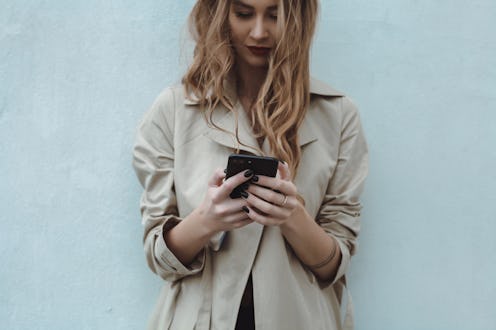Life
8 Security & Privacy Tips Anyone On Instagram Needs To Know
One of the most important elements of being a good digital citizen in the land of social media is being diligent with your privacy settings. Sure, social media is all about inviting people in and sharing, but that doesn't mean you shouldn't set boundaries like you would IRL. According to Instagram, there are several online security tips you might want to consider adding to your routine so that you're 100% in control.
To help foster a safer and more supportive digital space, the app recognized Safer Internet Day on Feb. 11, a day devoted to educating all social medial users about online safety, bullying, and offensive content. Instagram's efforts included an updated blog post that highlighted all of its newer safety features as well as the importance of actually putting them to use.
Whether you choose to post information to a public Instagram account or prefer to keep your account private, securing your personal information and privacy is within your power. Better yet, it should only take a few minutes of your time. From extra login protection, to one-click abuse reports, and customized regulations on posts and comments, there are several key ways you can amp up your security on Instagram:
1. Get To Know Your Instagram Privacy Settings
Get in the habit of regularly checking your in-app privacy settings. To locate, tap the menu bar in the upper right side of your profile screen, then tap "Settings", then tap "Privacy" to see all of your options. There, you can control your interactions and your connections, choose whether your profile is public or private, if your activity status is shared, if your Stories can be shared with non-followers, who can comment on your photos, what offensive words you want to filter, and more. And these preferences can always be altered in case your privacy needs change.
2. Use Two-Factor Authentication
In "Settings" you can opt to add extra security by activating two-factor authentication. This will protect your account when it's accessed by a device that the app doesn't recognize. If it's just you, logging on a new computer or a friend's device, you can request a login code that will be sent securely to a device of your choosing. If it's not you, the login will fail and whoever is trying to access your account will be denied.
3. Get To Know Your Instagram Security Settings
To ensure that your account is protected, that you're the only one who has access to it, and that you're aware of what data you're sharing, regularly check your security settings. To locate, tap the menu bar in the upper right side of your profile screen, then tap "Settings," then tap "Security." There you can check on your login activity to make sure that there haven't been any strange logins, increase your login security, and see all of the data you're sharing with the app.
4. Revoke Access From Third Party Apps
Some third party apps, like TikTok, allow you to sign up for them using your Instagram account. You might not even remember authorizing access from an external app, but in "Settings" under "Security," you'll notice a section called "Apps and Websites" that will pull up a list of "active" and "expired" apps. If you haven't authorized the apps listed, or no longer want them connected to your Instagram account, you can click "Remove" and it will immediately revoke access.
5. Check Your Photo Tags
Your Privacy tab also lets you manage your tag controls. Here you can opt to manually approve photo tags, and remove posts that you've already been tagged in that are currently shared. You'll want to check your tagged photos regularly, as often times spam accounts will tag users unknowingly and the content that they've tagged you in might not be PC. Leaving yourself tagged in a spam post could expose you to other spammers, so it's always good to report the image as spam, block the account, and remove the tag.
6. Block Suspicious Accounts
Getting followers is great, but it's good digital practice to regularly cruise through your followers list and make sure that you don't have spam accounts or suspicious accounts there. Just because your account is public doesn't mean you don't have to show discretion when welcoming your followers. If the account looks potentially fraudulent, report it or block it.
7. Report Issues
If you're getting logged out of your account, your password is no longer working, or you have noticed changes to your profile that you didn't institute, file a report immediately with Instagram. If someone is accessing your account, Instagram will be able to help you take the necessary steps to deal with this safety issue effectively. If you're experiencing bullying, or receiving inappropriate comments, messages, or photo tags, don't hesitate to report that either. The "Settings" tab has recently added "Support Requests," a new feature that shows the status of the claims you've made, as well as your entire report history.
8. Cross-Check Your Emails From Instagram
To fight against phishing, Instagram has created an in-app list of legitimate emails the app has sent you. This way, you can avoid having to assess the legitimacy of any emails that appear to come from Instagram, but could be from someone trying to steal your personal information. Head to "Settings" and tap "Emails from Instagram” (you can find it in the "Security" tab) and you will be able to see all recent emails Instagram actually sent to you.
